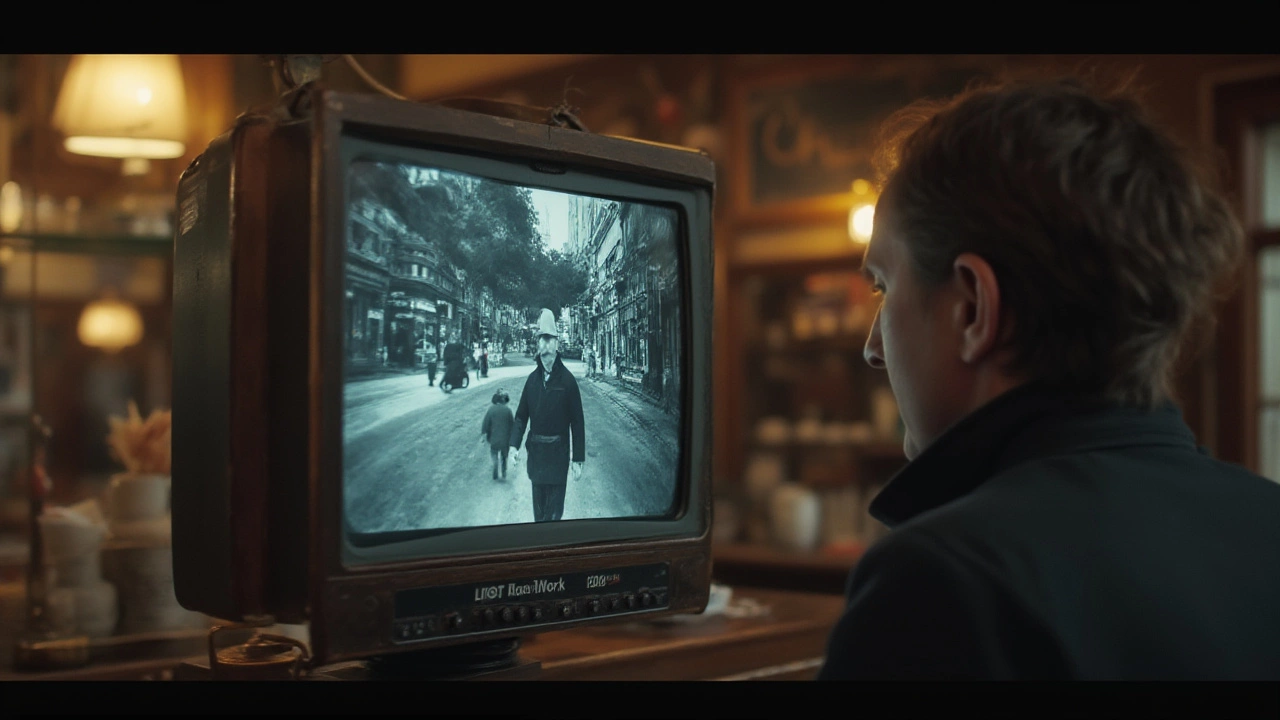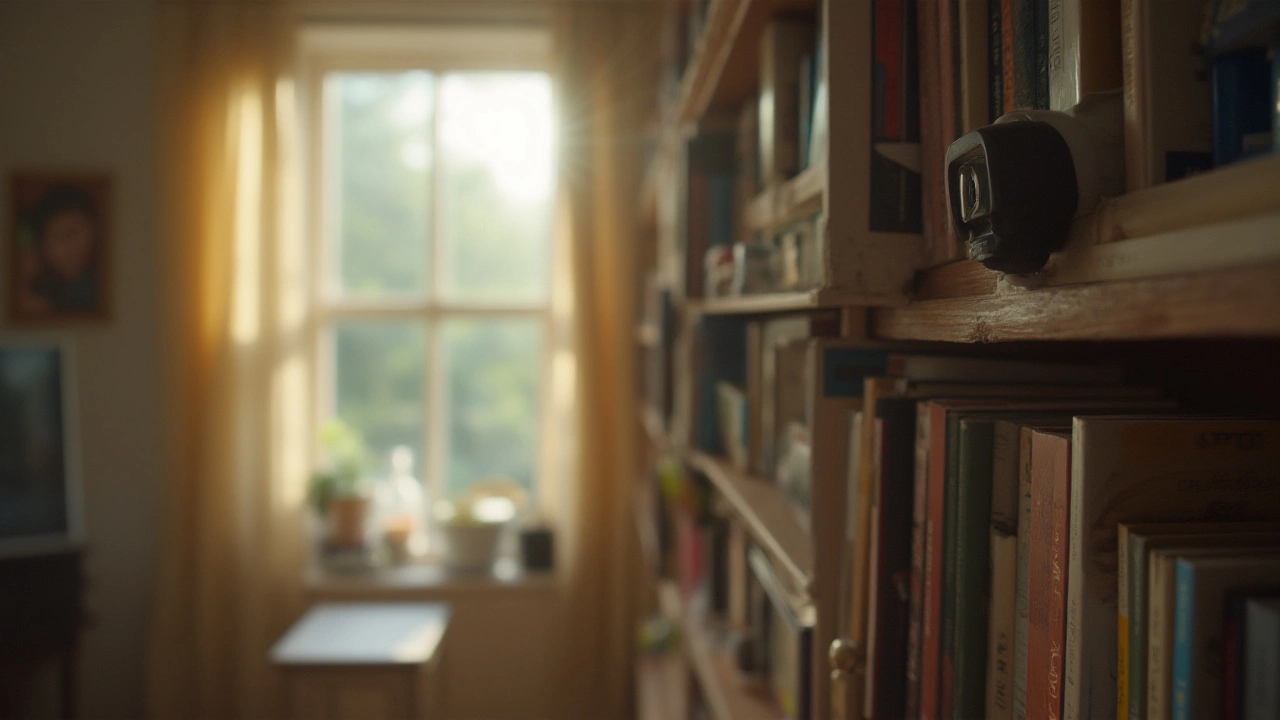Picture this: a power cut hits your street late at night, knocking out the Wi-Fi. Does your home security camera instantly go blind, or is it still quietly watching everything that happens? This is not a movie scene—it's a real worry for anyone who’s ever depended on smart cameras. Here’s the thing: not all cameras stop recording when the internet disappears. But which ones keep the show running, and what kind of footage can you count on? If your peace of mind—or your garage full of bikes—depends on catching what happens when your router blinks out, you’re going to want the honest, gritty details.
How Security Cameras Work Without Internet: The Hardware Matters
If you’ve got cameras around your house or business, it helps to know what’s inside those little boxes. Some record everything straight to a chip, some send everything over Wi-Fi to the cloud, and others use wires to dump video onto a special box in your closet. So when the internet suddenly drops, what happens? It depends on the setup.
Let’s talk about IP cameras—these are popular because they run over your regular network. If you set one up with a memory card (these are often called microSD cards), it’ll keep storing footage locally even if your Wi-Fi or fiber connection goes dark. The moment your internet comes back, it can sync up with your app or cloud again. But if you didn’t give your IP cam a memory card, guess what? No internet means no new footage until the signal’s back.
Now, wired CCTV cameras, usually paired with a DVR or NVR, are a different beast. They don’t need the internet to record. These systems dump everything onto a hard drive in real time. That’s why police and businesses often favor this style—they don’t care if the Wi-Fi is spotty. As long as there’s power, those hard drives just keep spinning. Search for real burglary footage online and you’ll spot plenty of timestamped, high-res video, even from old-school brick-and-mortar stores that never had a working modem.
Wireless “cloud” cameras, like some you grab off Amazon or the electronics shop, usually want to upload everything online. But if they don’t have SD card slots or at least some emergency backup memory, they can’t record at all if the router is out. A 2023 survey by Statista showed that nearly 55% of home camera users relied solely on the cloud, which means over half the footage in outages could simply vanish. For home users, the fix is simple: always check if the camera has card support before buying—or go for something with both local and cloud storage.
If you want to be extra sure, some pricier models offer dual recording—saving everything both online and to a physical chip, which covers you in a power or internet cut. The key piece? The right camera hardware, matched to your risk tolerance and the reliability of your local internet.
Types of Cameras: A Breakdown of Offline Recording Capabilities
Let’s break down the main camera types and what happens when your internet stops working. Here’s a look at the biggest categories—and how they behave when disconnected.
- Wired CCTV systems (with DVR/NVR): Classic security cameras, seen everywhere from corner stores in Wellington to banks in central Auckland, attach to a central recording device (DVR for analog signals, NVR for network cameras). These setups don’t rely on the internet for daily recording. If the power stays on, so does the footage, stored straight onto hard drives—days, weeks, even months’ worth, depending on drive size and camera quality.
- Wi-Fi or IP cameras with local SD storage: These “smart” cameras often sit on a shelf or screw to your garage. If you’ve added a microSD card, the camera quietly stores video clips as motion occurs. When you check the app later, even if your internet was down, you’ll find all the motion-triggered footage on the card—just pop it out, plug into a computer, and review.
- Cloud-reliant cameras: Many consumer cameras, especially cheaper Wi-Fi models, automatically save footage to the cloud with no local backup. Lose the internet, and they go blind. Videos captured before the cut are still there, but nothing new is saved until the web is restored. Some models won’t even let you view the camera live without an online connection.
- Hybrid cameras with dual recording: These are the gold standard for people who want redundancy. They record to both local storage (SD or internal memory) and the cloud. So, even during a blackout or a planned outage, everything is captured somewhere.
Check out this quick comparison table that covers what happens to your footage during a loss of internet. (Assume the power stays on—if you’re worried about power too, look for cameras with battery backup.)
| Camera Type | Records without Internet? | Records without Power? | Footage Location |
|---|---|---|---|
| Wired CCTV (DVR/NVR) | Yes | No (unless battery backup) | Local Drive |
| Wi-Fi/IP with SD Card | Yes | No (unless battery backup) | SD Card |
| Cloud-Only Wi-Fi | No | No | Cloud |
| Hybrid Cloud + Local | Yes | No (unless battery backup) | Both |
So, the *do cameras record without internet* question isn’t simple—it’s all about which camera, and where it stores its footage. A lot of Kiwis learned this lesson the hard way during Cyclone Gabrielle, when hundreds of home cloud cameras dropped offline, leaving blank hours exactly when people most needed proof of events or break-ins.
For renters and homeowners, here's a tip: before installing, test your camera at home. Unplug your router for an hour and see what ends up recorded. You’ll quickly know if you’re protected—or just have a $70 piece of plastic streaming nothing.

Tips to Keep Recording When Internet Goes Out
No one likes walking into the living room to find muddy footprints and nothing but a camera that says “offline” to show for it. Here’s how to keep your footage safe, even if your Wi-Fi hiccups or your fiber gets cut by a stray shovel (it happens!).
- Pick dual-storage cameras: Look for cameras that offer both microSD (or built-in) storage and cloud upload. Samsung, Reolink, and some Eufy models offer this—double the backup, double the peace of mind.
- Use a continuous power source: All bets are off if your power drops. Consider a small, cheap uninterruptible power supply (UPS) just for your cameras and routers. A modest UPS can keep cameras running for an hour or more—plenty for short outages.
- Hotspot as a last resort: If your camera requires cloud access for motion alerts, some can be switched to a mobile phone hotspot during an outage. Not ideal for weeks, but good for covering a short-term internet drop.
- Bigger SD cards: Bump up your camera’s storage with a high-capacity card—128GB instead of 32GB can give you several weeks of motion-triggered clips. Remember to check camera compatibility though, as not all support the biggest cards.
- Backup footage: Regularly download and save important clips to another device, especially if you’ll be away for a while. Cloud providers sometimes auto-delete footage after 7-30 days, and SD cards can get corrupted or stolen with the camera.
- Make it tamper-resistant: If it’s easy for a crook to grab your camera—or just the SD card—they’ll walk off with the evidence. Place cameras higher, or install them inside tough casings. Some models now encrypt footage, which adds another hurdle for thieves.
- Keep firmware updated: Manufacturers sometimes release fixes that allow better offline functioning. Some 2024 cameras now let you configure more features when offline, but only if you update regularly.
If you run a business, consider setting separate alerts so you’re notified when a camera loses its internet connection. This way, you can immediately check if local recording is still happening—or if you need to do something about it.
Here’s a stat to chew on: Global data recorder sales went up nearly 19% from 2021 to 2024, thanks mostly to people wanting footage that survives both hackers and internet problems. The newest DVRs and NVRs can stash months of HD video—you just need the drive space and a bit of planning.
If you live in a place where storms, construction, or even just bad luck takes out internet service now and then, it pays to focus on offline-ready cameras. The best models are rarely the cheapest on the shelf—but when you’re staring at a blank cloud and your bike’s missing, the value becomes pretty obvious.
What Actually Happens During an Outage: Real Life Scenarios and Solutions
Let’s imagine your house loses its internet during a windstorm. If you set up a Wi-Fi camera with a local memory card, it will keep recording, storing video quietly in the background. You just won’t get alerts or see a live feed on your phone until everything’s back online. After things settle down, you can review what happened by either popping the card out or checking the app if it syncs up after the outage.
But if you have a camera that only records to the cloud? Once your Wi-Fi dies, the footage ends abruptly. When you open the app, there’ll be a gap in the timeline. This is especially painful if you need proof of what happened while you were away. Some cameras do allow partial “buffering”—if the internet drops for just a minute or two, they can survive on internal memory. But a serious outage will leave a hole.
People running home-based businesses often set up both wired and wireless cameras. When the internet fails, the wired system (NVR/DVR) keeps capturing everything as usual, while the wireless cloud cameras do nothing. That’s why courts or insurance adjusters often request hard drive footage or SD cards—there’s no arguing with raw, locally captured video file timestamps.
Now, say you’re renting a flat and only allowed to use plug-in Wi-Fi cameras. Your best bet is a model with a large SD card and scheduled power checks. Some Kiwi rental properties have ancient wiring, and short power cuts can be just as bad as lost internet. If the camera is put on a timer with a battery backup (even a power bank can help), you’ll be protected during most regular hiccups.
Public places—buses, trains, even some taxis—tend to use cameras with internal hard drives or SD cards, counting on storage that keeps running even as buses go through dead zones. There’s always a risk of physical theft or accidental overwriting, but day to day, these cameras offer a smoother safety net than relying on public Wi-Fi.
Look out for camera brands that advertise “offline viewing” as a specific feature. This means you can connect your phone or laptop directly to the camera (over local Wi-Fi) without needing the internet, letting you check recent footage even in a total outage. Not every model offers this, so double-check if that’s important to you.
If you want a sure-fire way to never lose footage, try a hybrid system: wired NVR/DVR inside, plus a few SD-card Wi-Fi cameras as backup. Pair with a UPS, rotate your memory cards monthly, and do a quick test every now and then. This way, you’ll always have proof—whether it’s catching a neighbor’s cat or something more serious—no matter what your router decides to do.

